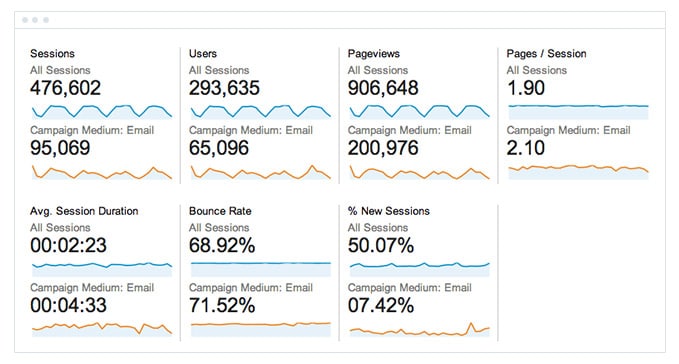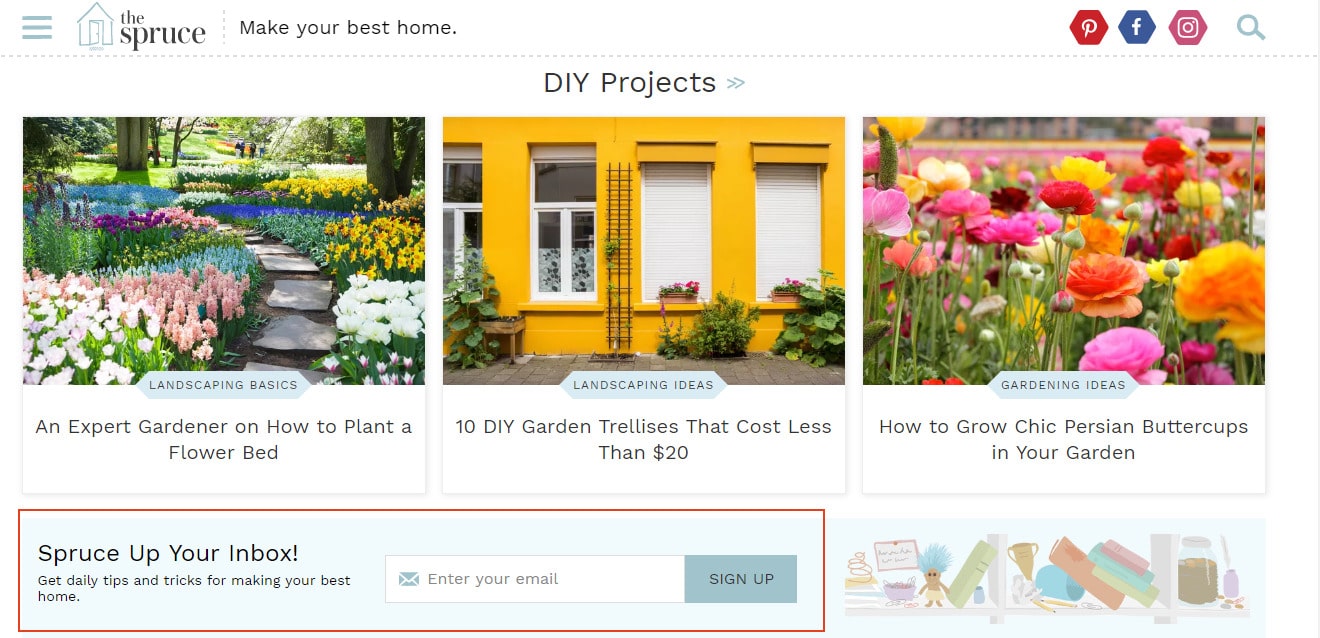Step by step guide to transform your email marketing program

As an email marketer, you know that your email program is just like anything else in life–sometimes it needs a tune-up.
Even the best things break down in some way, at some point, and not even the most robust inventions work well forever.
Maybe you work for a company that has just undergone a massive rebranding. Such a huge shift would necessitate an equal amount of change for the email strategy. Perhaps you have found great success with an email approach in the past, but over time, your metrics have ticked downward.
Or maybe you’re a seasoned email marketer who simply thinks your email program could use a refresh—or reset.
In this post, we’ll provide a step-by-step guide to revamp your email program. We know you’re no stranger to these concepts, but let’s start with some basics for a quick refresher.
Start your email program with a focus on goals.
No one sends emails for the purpose of just … sending them. Every email marketer should know that our goals should be at the forefront of our minds, and that we need to work toward them strategically.
First, focus on goals related to why you are looking to transform your email campaign. Are your emails not providing the type of engagement you’re looking for? Has your company changed its brand vision or its overall business goals to a large degree?
Your method of working toward a new email program should keep in mind the changes you’re making from the previous one. You know what your old method didn’t accomplish. In that respect, you know what not to do, what worked, and what didn’t.
As a seasoned email marketer, you’re also familiar with the greater objectives behind email marketing. But, for the sake of being thorough, we can list them here. They include increasing traffic, building an audience, spreading brand awareness, generating leads, and of course, generating sales.
We can also review the important metrics you should keep track of when revamping your email marketing efforts.

Source: Emma
As you can see, there’s some overlap between these trackable metrics and general business goals. It’s most beneficial to keep it all in mind as you move forward with the transformation of your email strategy.
Consider your list carefully and build on it the right way.
Email marketing is as much about your list as it is your content. You could create the most dazzling newsletters and have the best copy in the industry. Yet, to really get those optimal results, you want to build a list of subscribers who want to read what you have to say.
The guide to list building includes many steps. We’ll summarize the main ones here, so you can ensure your list for a revamped campaign is built the right way—and in the best way you know how.
Offer simple subscribe opportunities.
The invitation to sign up for your newsletter should be as simple as possible. Your homepage, checkout page, contact page, blog, and social profiles are fantastic places to offer a subscription opportunity. Even your email signature is an effective place to promote your list, so when you send those one-off emails, your recipients have a chance to opt-in for more.
Offer incentives.
The only thing people love better than a simple signup process is the ability to get something out of it. Talk about the best content you offer. Mention special deals you send through email. If you have exclusives, definitely promote those in your offer. These benefits may be the perfect way to nudge a hesitant reader into becoming a subscriber.
Use interactive tools.
If you’re looking to encourage readers to subscribe, you have a lot more than text at your disposal. Putting a simple subscribe button on your landing page or blog is a great way to improve your chances of scoring signups. You can even drop these contact forms into your social profiles.

Once you’ve got your list set up, the next step is to create your segments. Segmentation is almost always a good idea—even if everyone on your list wants to hear what you have to say, not every email is the right fit for every person.
Some demographics, or some readers dependent on their relationship with your brand, may be expecting something different. Some content will resonate with one particular audience and could be a total miss for another subset.
Using segments is about setting values and rules for the groups you create. This makes it easier to create targeted content, thus allowing you more accuracy when pursuing the new goals of your transformed strategy.
The benefit of using segments is you can quickly send out emails to subsets of your list without having to find all those recipients manually. For example, your new list may have a lot of carry-overs from your old one. Why not send out a special email to that segment, thanking them for sticking around even as you’ve changed things up?
Maybe some of your old subscribers left when this change occurred. That makes for a great opportunity to send a second chance email, asking them to come back.
Get your ideas together then test them for best results.
Email marketers likely have no shortage of ideas when it comes to content creation. From simple one-off messages to long-term newsletters, many marketers brains are a fountain of possibilities.
However, you don’t just want ideas. You want ideas that are proven to work. The only way to prove whether something is effective is to test it in action. A/B testing is something many email marketers know about. When you’re transforming your strategy, it is more important than ever.

Source: Emma
The benefit of testing is that you can do it with everything. You can send the same email with two different subject lines, or two different call-to-action buttons. The places where you put your social icons, the color scheme of your banners—literally everything can be examined under a microscope to show which is superior.
When you’re transforming a strategy, it is worthwhile to be rigorous with this phase. Your new ideas and new goals are dependent on actionable steps. The only way to determine which steps take you to the result you want is to test them side by side.
Reexamine your approach to email design.
Once you’ve gotten the testing phase underway, it is a good time to start trying out different designs. Transforming your email program isn’t just about tracking metrics or adding names to a list. One of the things that makes email marketing so enjoyable is the creative freedom it offers.
Likewise, a new strategy gives you a chance to try new designs. Let’s say you’re in the scenario where your company has gone through major organizational changes to its structure and brand. Your designs may need to take a radically new approach to make the switch apparent.
If your old designs were mostly text-based, try experimenting with more graphics. The options for design versatility are also present in other scenarios. If you’re simply hitting the reset button for your strategy, you may want to freshen things up with an entirely different design approach.
Use new colors, new fonts, and new image types for your creations. You’re giving yourself the chance to reinvent your approach to email, so don’t discount different design choices and their impact.
Once things are in motion, utilize personalization.
You’ve got a new feel for your brand and your strategy after the changes. You have a new list built complete with revamped segments. Now you’re at the point where you can turn to personalization.
Should you? According to most marketers’ results, yes. About 88% of them said personalization led to improvements.
Personalized content is effective because it helps your readers feel more connected to you. This is especially helpful when it comes to an email program transformation. A new campaign or new brand needs to really resonate with readers and make them feel valued.
When you are personalizing content, you’re also more likely to facilitate engagement This can help you start those metrics on their ascent. Once you’ve got the momentum going, it is easier to keep it going. Getting to this point takes a lot of work, but the results it offers can make it worth it.
Wrap up
Transforming an email strategy can be a lot like starting over. Even if you’re revamping the majority of your content and not starting completely fresh, it is a long process that includes:
- Identifying your goals and focusing on them
- Building your email list the right way
- Testing your ideas to see what works
- Experimenting with your email design
- And personalizing your message
When transforming your email program and strategy, make sure you have a platform with all the features you need to succeed and surpass your previous results.
MOST RECENT ARTICLES
Want to engage your audience and grow your brand? Try Emma's robust easy-to-use product today.












